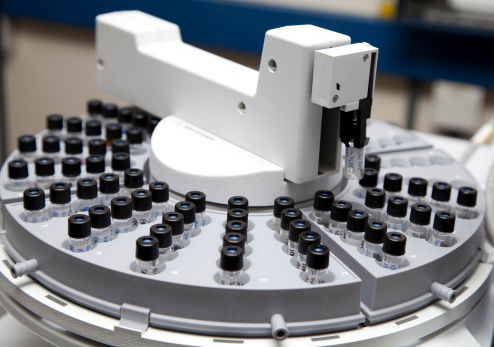Choosing the Right Vial For Chromatography

Before you begin chromatography, you must choose the right type of vial for the job. For HPLC analysis, a clear or amber vial will be appropriate. For ion chromatography, you should avoid using glass vials. In IC, polymer vials will prevent the ions from leaching out of glass. To make ion chromatography simpler, use polymer vials for ion chromatography.
Vials used in chromatography are generally made of plastic. These plastic vials are compatible with most solvents. A polypropylene vial is compatible with acetone, isobutyl alcohol, methanol, and acetic anhydride. Another good option for a chromatography vial is polymethylpentene. This polymer is lightweight and has excellent chemical and heat resistance.
Its transparency is another plus. Choosing the right vial for chromatography is critical to achieving accurate results. The vial is made of two components: a cap and a liner. Caps are usually made of aluminum, polyethylene, or polypropylene. The liner is usually made of silicone or PTFE. The closure is an important part of a vial, preventing contamination between samples. During high-pressure situations, a headspace vial cap is recommended. See this source for more info! Aside from the color of the vial, the size of the vial also matters.
A proper vial will contain sufficient material to store several samples. It should also have the correct capacity to hold the sample. The volume of the sample should be at least one gram. You should always check the specifications of your autosampler to ensure that it is compatible with the type of vial you have selected. It is important to make sure that the chromography vial you choose is compatible with the manufacturer's requirements. Check out this website at https://www.youtube.com/watch?v=TdJ57SQ6GAQ for more info about chromatography. The color and material of the vial can affect the quality of your samples. In light sensitive samples, amber vials are preferred.
A transparent, plastic or acrylic bottle with a lid will work well for color change analysis. In contrast, glass or plastic chromatography should be performed in a vial with a polymer closure, since the latter will prevent the ions from leaching out. A headspace cap is the best choice for high-pressure applications, such as those that involve the use of an autosampler. Know more about Chromatography here! In addition to the color of the vial, the size of the vial is also important. It is essential to use the right size and color for your chromatography experiments. In case of an autosampler, you should check the manufacturer's recommendations for compatibility with the vial. You may also want to consider headspace vial caps, which prevent contamination between samples. If you are using a headspace cap, be sure that it fits your autosampler.
The type of chromatography vial you choose will affect the results of the analysis. For sensitive samples, an amber or clear HPLC Sample Vial is recommended. For color change analysis, use glass vials for IC. However, you should avoid glass vials when performing ion chromatography or gas chromatography. In these cases, you should opt for a polymer vial that prevents ions from leaching out of glass.
